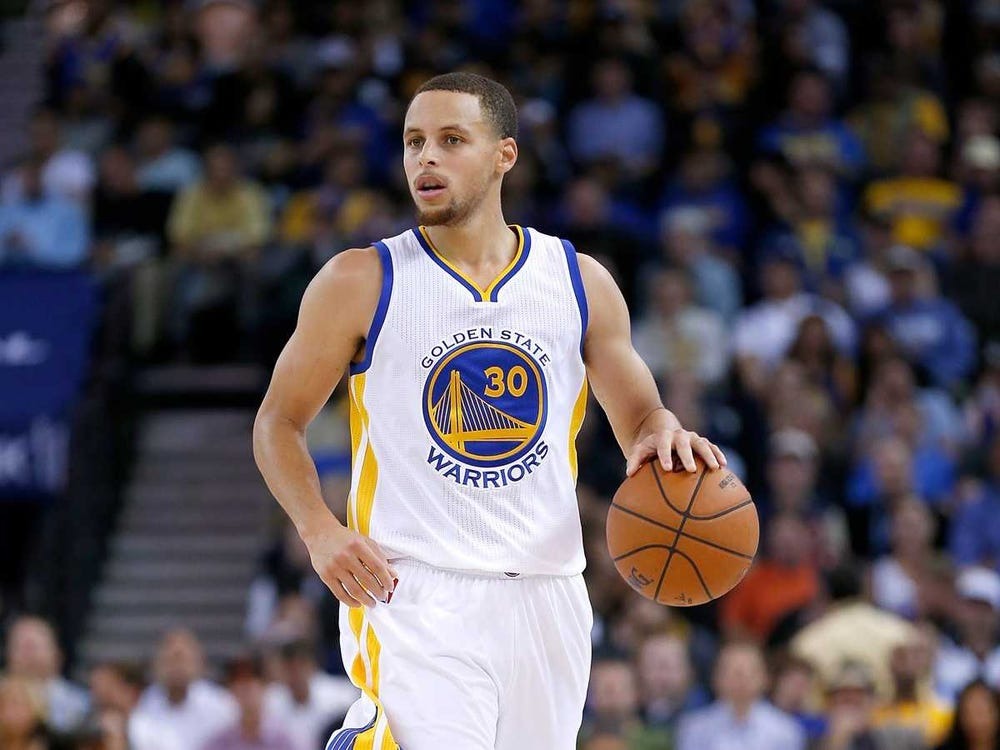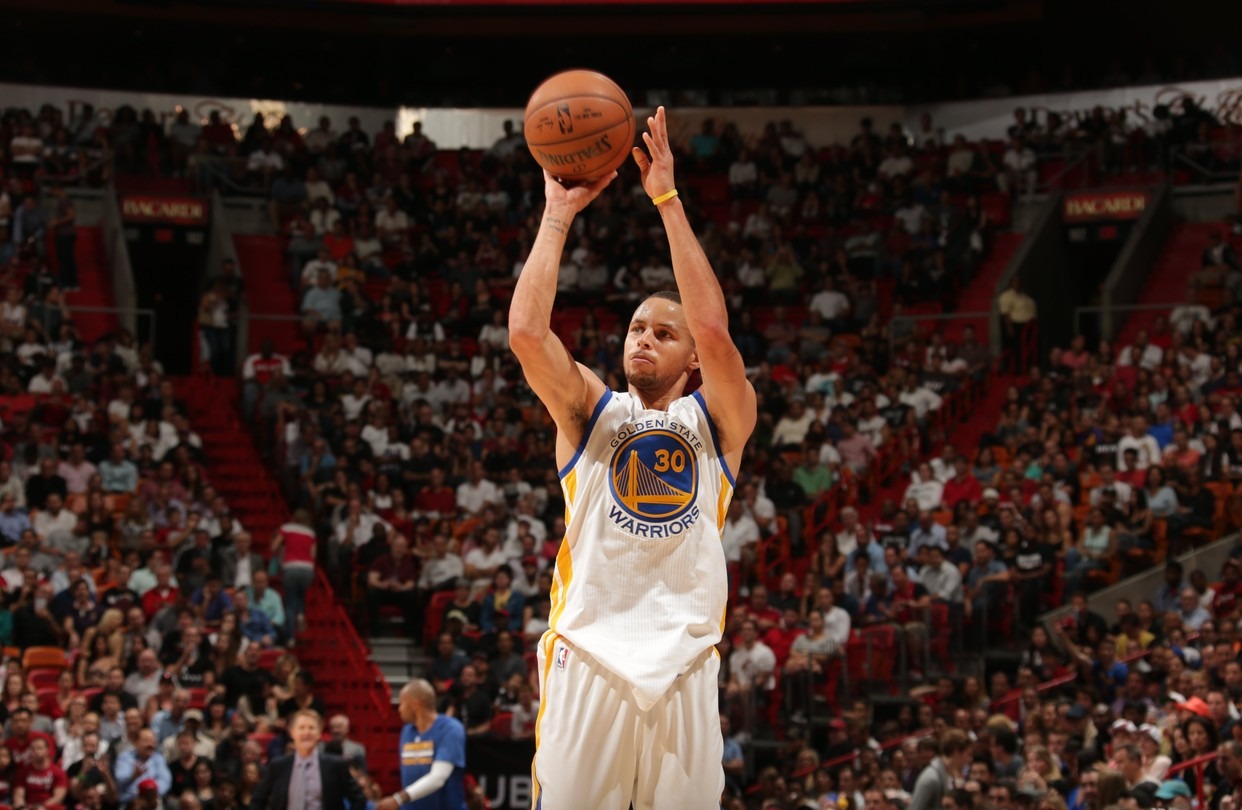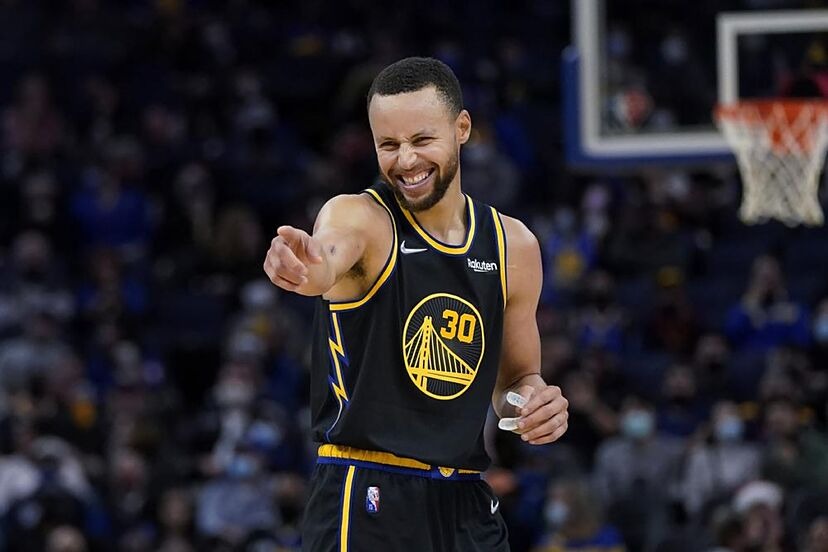Everyone and their grandmother know this fact by now, but the Golden State Warriors’ offense is monumentally much better if Steph Curry is there to act as its engine.
While Curry may not be the traditional (i.e., old school) definition of what a point guard is, he has pretty much redefined the concept of playmaking from that position — not only as an on-ball initiator, but also as an off-ball chaos generator who commands extreme attention from defenders constantly chasing him. Trying to examine his impact in terms of pre-defined roles is a futile exercise — as Isiah Thomas tried to do as a guest on Draymond Green’s podcast.
While it’s true that Green may have a bigger piece of the pie when it comes to the number of assists he generates whenever he’s on the floor — he’s second on the team in assist percentage (29%) behind Chris Paul (33.8), while Curry is behind Green (24%) — assists are just one part of the equation when it comes to what playmaking and shot creation truly are.

To be an elite playmaker in the NBA requires several factors, but perhaps the most important one is not only being able to create an advantage — it also requires being a walking (or running, in this instance), talking, and breathing manifestation of an advantage. Nothing else best captures what Curry has been for the past decade than the description above, and it’s a testament to how a system that has unlocked what he does best on offense has also been fueled by his all-time-great talent and skill.
The damage he does as he whizzes around the court like a pinball — able to come off one or multiple screens, a defender trying to keep up, and forcing opponents to make a choice (or ignore them) — is never not a fun sight to see. I would argue that it’s the most entertaining aspect of NBA basketball in the modern era, but if you think I’m too biased from watching Curry do his thing for several years, go see for yourself:

You can see why defenses are so hard pressed to defend Curry on the action above. They have several options to choose from when it comes to defending him around an exit screen or wide pindown, each with a corresponding consequence: 1) you can have his defender lock and trail, stay home, attempt to fight over the screen, and hope that he gets there on time — at the risk of the defender not getting there on time and leaving Curry open for a three; 2) switch the action, with the screener’s defender going over to defend Curry around the screen and Curry’s defender switching onto the screener — at the risk of Curry getting a favorable matchup; or 3) put two to the ball on Curry around the screen — at the risk of opening the slip/roll to the rim by the screener.
All three options above — with Curry as the keystone — generate efficient offense. Wouldn’t you agree that it’s the exact definition of someone who makes plays (i.e., a playmaker)?
Most people make the mistake of separating the concepts of playmaking and scoring, without realizing that these two aren’t mutually exclusive. Scoring is a form of playmaking, while also being the spark behind a scheme.

Curry bends and ultimately breaks half-court defenses because he can score like this:
While Curry and Green coexist in a mutualistic form of partnership, what ultimately separates them as playmakers is the chasm in scoring ability. While Green can thread passes through the tightest of windows, has delivery methods matched by few in the league, and makes himself a valued part of the offense, his inability to create his own shot and score places a lid on his value as a playmaker.
Green is the ultimate middleman, the one who acts as the bridge between the spark (Curry) and the explosion:
The “spark” — two defenders attaching themselves to Curry around Green’s ballscreen — is made possible because of the threat of Curry pulling up around the screen. It’s completely fine to acknowledge Curry’s importance as the fuel that drives this action without downplaying Green’s role as the one who perpetuates it toward its endpoint (Jonathan Kuminga).
The reverse is also true: one cannot solely appreciate Green’s talent as a 4-on-3 short-roll passer without acknowledging what made the situation possible in the first place:
And — in most instances — one can’t give Green the entirety of the credit whenever he does score. Because it often looks like this:
While Green has a knack for knowing when to keep the ball on fake handoffs, he is massively helped by Curry’s pull. LeBron James is expecting the ball to be pitched to Curry and is preparing to close toward him, but he is fooled by Green’s deception — which results in a layup.

Again, that is made possible by the attention Curry commands and Green’s ingenuity with the ball — but it’s also fair to place more weight on the former.
It’s not as if Curry himself can’t be a playmaker in the mold of an “old school” point guard. Even those possessions are born out of a desire by defenses to stop him in his scoring tracks:
Curry drawing multiple defenders inward — with Green nearby in the dunker spot to make himself available — is not a novel concept.
He creates chaos with the ball as much as he creates chaos off of it:
Which is why all this questioning and doubting of Curry as a point guard because he doesn’t rack up the assists and doesn’t pound the ball in half-court situations isn’t an enriching discussion. To devalue his playmaking because he doesn’t fit the traditional definition is to miss the forest for the trees.
Another way of looking at Curry and his value as the one who makes everything tick: In the previous three games that he missed due to an ankle sprain, the Warriors scored a measly 107.8 points per 100 possessions against the San Antonio Spurs and Dallas Mavericks combined — which would be the equivalent of the worst offense in the league in non-garbage time.
Against the Lakers tonight, the Warriors put up 134.7 points per 100 possessions — a mark that would blow away the best offense in the league.
If that isn’t proof of Curry’s importance to this offense — and his enduring value as a playmaker, scorer, and overall fulcrum — I don’t know what is.